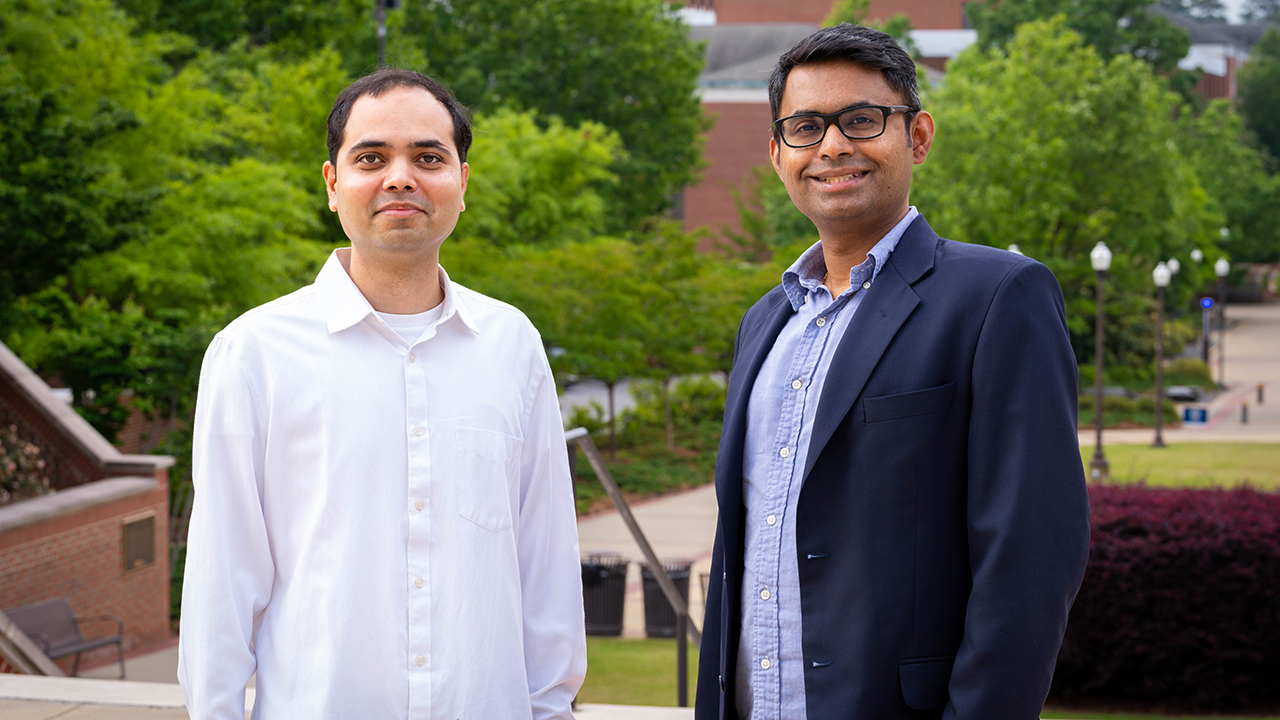Aerospace engineering faculty earn DOD research project to study rotor performance in adverse environments
Published: May 6, 2024 10:00 AM
By Dustin Duncan
Nek Sharan, assistant professor in the Department of Aerospace Engineering, and Vrishank Raghav, associate professor of aerospace engineering are one of the 27 collaborative academic teams awarded research projects through the U.S. Department of Defense's Defense Established Program to Stimulate Competitive Research (DEPSCoR) program.
According to the DOD, DEPSCoR is a capacity-building program designed to strengthen the basic research infrastructure at higher education institutions in underutilized states and territories.
Sharan is the principal investigator for the project 'Dynamic Loads and Flow Structures on a Hovering Rotor Blade Above Inclined Ground.' Raghav, the co-PI, is collaborating with Sharan to investigate the impact of airflow on rotor blades while hovering over inclined surfaces.
“Rotorcraft, including military helicopters and modern drones, often operate in these conditions, but the amount of thrust produced and why they reduce or increase in such unique scenarios aren’t well understood,” Sharan said.
Sharan plans to develop advanced simulations to model the complex airflow around the rotor blades and understand how thrust is affected. Additionally, they plan to investigate the influence of different airflow patterns on ground forces.
Raghav’s responsibility involves conducting experiments to measure aerodynamic forces and airflow around the blades utilizing his novel Rotating Three-Dimensional Velocimetry (R3DV) methodology. This method facilitates the measurement of time-resolved 3D velocity fields within the rotating frame of reference.
"The measurements needed for understanding this problem are very challenging and our technique — R3DV — is one of the few that is capable of quantifying this flow field,” Raghav said.
Sharan will use the data gathered by Raghav to validate his code/solver.
“Once my solver is validated and we can expect accurate results, it may be scaled to simulate flow conditions experienced by the rotorcraft (helicopters or drones) at realistic scales,” Sharan said.
Sharan understands that the simulations need to be performed over a range of parameters, by varying the types of slopes, rotor height and the number of blades. This will allow him to explore how these factors influence the flow field, ground forces and the thrust experienced by the rotorcraft.
When helicopter blades hover over dusty areas, they can create a phenomenon known as a “brownout,” which significantly impairs the pilot’s visibility. Similarly, rotorcraft operating near snow-covered mountains may encounter a “whiteout” effect. These conditions pose severe safety concerns for personnel and equipment on the ground and aboard the vehicle.
“An incomplete understanding of the ground effects has led to several rotorcraft accidents in recent times, so there is considerable interest in understanding both the thrust dynamics and the overall flow field,” Sharan said.
If pilots know how fast to descend to a lower altitude and how high above the ground to hover, it will reduce risks for personnel or passengers exiting the vehicle or dropping supplies/equipment to the ground. Additionally, it could reduce the generation of dust or other environmental disturbances.
The DEPSCoR Research Collaboration competition is open to tenured and tenure-track faculty members in 37 states and territories eligible for DEPSCoR funds. The competition helps introduce potential researchers to DOD's unique research needs and supporting research ecosystem. Each collaborative team pairs a PI new to the DOD research enterprise with a mentor who has previously worked with the department.
Raghav recently secured a DOD grant for his research on implementing the R3DV technique in forward flight conditions. He said that Sharan's work complements his own because they both combine computational and experimental methods. Since Raghav's research tackles similar challenges outlined by the DOD, their collaboration makes sense.
“I was very grateful to have the opportunity to help a colleague through this process,” Raghav said. “It provided me an opportunity to share what I have learned over the past few years and I am happy that it helped Nek win the DOD grant.”
Media Contact: , dzd0065@auburn.edu, 334-844-2326
Nek Sharan (left) and Vrishank Raghav (right), both aerospace engineering faculty, pose for a photo outside on Auburn University’s campus.



